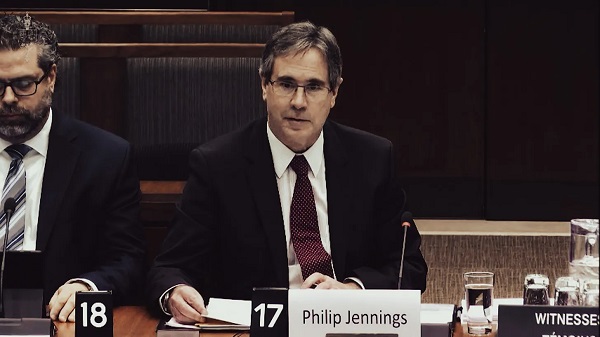Business
The problem with deficits and debt

From the Fraser Institute
By Tegan Hill and Jake Fuss
This fiscal year (2024/25), the federal government and eight out of 10 provinces project a budget deficit, meaning they’re spending more than collecting in revenues. Unfortunately, this trend isn’t new. Many Canadian governments—including the federal government—have routinely ran deficits over the last decade.
But why should Canadians care? If you listen to some politicians (and even some economists), they say deficits—and the debt they produce—are no big deal. But in reality, the consequences of government debt are real and land squarely on everyday Canadians.
Budget deficits, which occur when the government spends more than it collects in revenue over the fiscal year, fuel debt accumulation. For example, since 2015, the federal government’s large and persistent deficits have more than doubled total federal debt, which will reach a projected $2.2 trillion this fiscal year. That has real world consequences. Here are a few of them:
Diverted Program Spending: Just as Canadians must pay interest on their own mortgages or car loans, taxpayers must pay interest on government debt. Each dollar spent paying interest is a dollar diverted from public programs such as health care and education, or potential tax relief. This fiscal year, federal debt interest costs will reach $53.7 billion or $1,301 per Canadian. And that number doesn’t include provincial government debt interest, which varies by province. In Ontario, for example, debt interest costs are projected to be $12.7 billion or $789 per Ontarian.
Higher Taxes in the Future: When governments run deficits, they’re borrowing to pay for today’s spending. But eventually someone (i.e. future generations of Canadians) must pay for this borrowing in the form of higher taxes. For example, if you’re a 16-year-old Canadian in 2025, you’ll pay an estimated $29,663 over your lifetime in additional personal income taxes (that you would otherwise not pay) due to Canada’s ballooning federal debt. By comparison, a 65-year-old will pay an estimated $2,433. Younger Canadians clearly bear a disproportionately large share of the government debt being accumulated currently.
Risks of rising interest rates: When governments run deficits, they increase demand for borrowing. In other words, governments compete with individuals, families and businesses for the savings available for borrowing. In response, interest rates rise, and subsequently, so does the cost of servicing government debt. Of course, the private sector also must pay these higher interest rates, which can reduce the level of private investment in the economy. In other words, private investment that would have occurred no longer does because of higher interest rates, which reduces overall economic growth—the foundation for job-creation and prosperity. Not surprisingly, as government debt has increased, business investment has declined—specifically, business investment per worker fell from $18,363 in 2014 to $14,687 in 2021 (inflation-adjusted).
Risk of Inflation: When governments increase spending, particularly with borrowed money, they add more money to the economy, which can fuel inflation. According to a 2023 report from Scotiabank, government spending contributed significantly to higher interest rates in Canada, accounting for an estimated 42 per cent of the increase in the Bank of Canada’s rate since the first quarter of 2022. As a result, many Canadians have seen the costs of their borrowing—mortgages, car loans, lines of credit—soar in recent years.
Recession Risks: The accumulation of deficits and debt, which do not enhance productivity in the economy, weaken the government’s ability to deal with future challenges including economic downturns because the government has less fiscal capacity available to take on more debt. That’s because during a recession, government spending automatically increases and government revenues decrease, even before policymakers react with any specific measures. For example, as unemployment rises, employment insurance (EI) payments automatically increase, while revenues for EI decrease. Therefore, when a downturn or recession hits, and the government wants to spend even more money beyond these automatic programs, it must go further into debt.
Government debt comes with major consequences for Canadians. To alleviate the pain of government debt on Canadians, our policymakers should work to balance their budgets in 2025.
Business
What’s Going On With Global Affairs Canada and Their $392 Million Spending Trip to Brazil?

As I’m sure your eyes have been glued to every scrap of news about the recent COP30 climate conference, I need hardly tell you about Canada’s related $392 million commitment. This, of course, will be part of (or perhaps in addition to) our overall $200 billion investment in the fight against global warming since 2015.
$200 billion, by the way, comes to nearly $5,000 for each man, woman, and child in the country. The yearly interest on the loans that were required to spend that money will cost considerably more. And, as far as we can tell, all that money has so far failed to even slow the rise in global temperatures.
Ok. But who’s getting this particular tranche of $392 million? Well, $263 million of it will go to the International Fund for Agricultural Development (IFAD).
IFAD is a fund, so it doesn’t do anything itself. But in this case, it’s expected to distribute money for projects in the Brazilian Amazon and work with local partners on forest and rural development issues. It’s the local partners who will do the work.
No matter who’s holding the shovels, any rural, agricultural, or environmental operations taking place in, for example, the State of Amazonas will require approval or licensing from the government agency, Instituto de Proteção Ambiental do Amazonas (IPAAM).
And that could be interesting. Because that very same IPAAM, as it happens, has been under Brazilian Federal Police investigation for the past year. In other words, the agency in control of issuing licenses and authorizing the work IFAD wants done, is (allegedly) as crooked as a corkscrew.
Well that certainly gets us off to a great start.
The next $106 million from Canada’s commitment has been directed to Deetken Asset Management’s new Inclusive Climate Action Fund (ICAF). As the name suggests, ICAF is a climate-focused investment fund whose broader strategy includes a “gender lens”. Which is another way of saying that financial success is not the fund’s overriding priority.
Under the best of circumstances, deploying climate-focused financial instruments through small and medium-sized enterprises – especially in emerging markets – is notoriously challenging. Besides all the regular headwinds facing any business startup, initiatives in those parts of the world will routinely face risks related to corruption, criminal gangs, and plenty of currency volatility. Being forced to operate while business solvency is your second or third-tier priority is like swimming across a fast-moving river with your legs tied to a tree.
What’s curious is that the government is doubling down on ESG investments at just the moment in history when ESG failures are hitting their stride. U.S.-based ESG funds faced net outflows of $8.6B in Q1 2025, while fund closures outpaced launches in 2024. Major managers like Vanguard approved no ESG proposals at all in 2024.
Closer to home, Canada Pension Plan Investments scrapped its net-zero emissions commitment “after several Canadian banks left the Net-Zero Banking Alliance earlier this year”. It seems that they felt rigid climate targets could conflict with the Plan’s fiduciary duties to maximize financial returns.
I for one would be curious to know who in Global Affairs Canada was ultimately responsible for those spending choices and whether they’ll be held responsible in the event of program failures. Although, all things considered, I’d be surprised if we ever hear anything at all about where all that money really ended up.
Automotive
Power Struggle: Governments start quietly backing away from EV mandates

From Resource Works
Barry Penner doesn’t posture – he brings evidence. And lately, the evidence has been catching up fast to what he’s been saying for months.
Penner, chair of the Energy Futures Institute and a former B.C. environment minister and attorney-general, walked me through polling that showed a decisive pattern: declining support for electric-vehicle mandates, rising opposition, and growing intensity among those pushing back.
That was before the political landscape started shifting beneath our feet.
In the weeks since our conversation, the B.C. government has begun retreating from its hardline EV stance, softening requirements and signalling more flexibility. At the same time, Ottawa has opened the door to revising its own rules, acknowledging what the market and motorists have been signalling for some time.
Penner didn’t need insider whispers to see this coming. He had the data.

Barry Penner, Chair of the Energy Futures Institute
B.C.’s mandate remains the most aggressive in North America: 26 per cent ZEV sales by 2026, 90 per cent by 2030, and 100 per cent by 2035. Yet recent sales paint a different picture. Only 13 per cent of new vehicles sold in June were electric. “Which means 87 per cent weren’t,” Penner notes. “People had the option. And 87 per cent chose a non-electric.”
Meanwhile, Quebec has already adjusted its mandate to give partial credit for hybrids. Polling shows 76 per cent of British Columbians want the same. The trouble? “There’s a long waiting list to get one,” Penner says.
Cost, charging access and range remain the top barriers for consumers. And with rebates shrinking or disappearing altogether, the gap between policy ambition and practical reality is now impossible for governments to ignore.
Penner’s advice is simple, and increasingly unavoidable: “Recognition of reality is in order.”
- Now watch Barry Penner’s full video interview with Stewart Muir on Power Struggle here:
-

 National2 days ago
National2 days agoMedia bound to pay the price for selling their freedom to (selectively) offend
-

 C2C Journal2 days ago
C2C Journal2 days agoLearning the Truth about “Children’s Graves” and Residential Schools is More Important than Ever
-

 Business2 days ago
Business2 days agoIs there a cure for Alzheimer’s Disease?
-

 Brownstone Institute2 days ago
Brownstone Institute2 days agoThe Unmasking of Vaccine Science
-

 Bruce Dowbiggin2 days ago
Bruce Dowbiggin2 days agoSometimes An Ingrate Nation Pt. 2: The Great One Makes His Choice
-

 Alberta2 days ago
Alberta2 days agoNew era of police accountability
-

 Alberta2 days ago
Alberta2 days agoEmissions Reduction Alberta offering financial boost for the next transformative drilling idea
-

 Business1 day ago
Business1 day agoRecent price declines don’t solve Toronto’s housing affordability crisis









